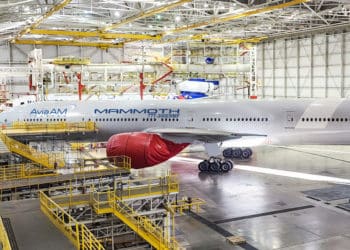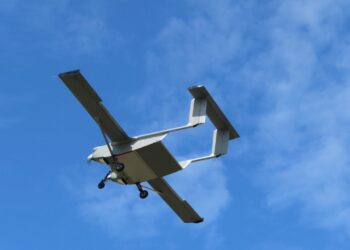Give thanks, and shop
It’s Thanksgiving Day in the United States, and as usual, distant relatives will convene at dinner tables across the country to discuss not only what they are thankful for, but also their Black Friday and Cyber Monday shopping strategies. But this year, despite the air freight industry’s arduous efforts to ensure it is equipped to handle peak e-commerce shipments, delays and interruptions may still ensue. Yesterday we reported in detail, when ABX Pilots went on strike. If fourteen 767Fs are suddenly out of service for Amazon’s own-controlled Prime Air network during one of the busiest shopping periods of the year, the e-commerce giant will have to rely more heavily on other integrators. Amazon maintains there’s no problem, “We work with a variety of carriers and are confident in our ability to serve customers,” spokeswoman Kelly Cheeseman said. Regardless of the impact however, “Black Friday Weekend,” the three-day period following Thanksgiving is expected to impress.
This year the National Retail Federation estimates 59% of Americans, some 137.4 million people, will fill their carts, either online or off-line, during the three-day Black Friday Weekend. Those unable to get their shopping fill during the weekend will then take to the internet on “Cyber Monday,” the standalone shopping day which falls on the first day directly following Black Friday Weekend. Like Black Friday, Cyber Monday also carries hefty expectations. Adobe Digital Insights projects the gross merchandise value of online sales during the 24-hour Cyber Monday period will hit US$ 3.36 billion, a 9.4% increase over 2015.

Although once impressive, Cyber Monday is now dwarfed by China’s 11/11 “Single’s Day”. Just a few weeks ago, on 11 November, China’s largest online e-tailer, Alibaba, sold more than US$1 billion during the first five minutes of the day, and $7.2 billion after only two hours of shopping. By the end of the day, the retailer had moved a staggering $17.8 billion worth of merchandise.
With domestic air networks in China strained by the lack of capacity, many shoppers, especially those located outside major tier-1 cities, have come to accept the trade-off between delivery speed, and product price during Single’s Day. As domestic express carriers like SF Express Airlines and YTO Express Airlines continue to add capacity however, this will begin to change. Since commencing scheduled service in 2010, SF has already managed to build a fleet of thirty-four freighters: twelve 737-300Fs, three 737-400Fs, sixteen 757-200Fs, and three 767-300Fs. In addition, SF has two more 767-300 P2F conversions on firm order with Boeing, and commitments for ten 737-800BCF conversions. YTO meanwhile, has five 737-300Fs in operation, with another -300 in conversion by PEMCO at the STAECO facility in Jinan. Earlier this year YTO also signed a launch customer agreement (LCA) with Boeing for fifteen 737-800BCF passenger-to-freighter conversions.
Returning to Black Friday, since most readers are likely already familiar with the cargo-hold of a 767 freighter, we’ll start the holiday weekend off with a few videos of the warehouses and sortation facilities responsibility for filling ensuring those planes are filled.
First, Business Wire provides an inside look at one of Amazon’s most technologically capable fulfillment centers. Note the abundance of Kiva robots whirring around the facility. Moving at speeds of 3-4 miles per-hour, the robots bring items to shipment packers precisely when they are required.
https://www.youtube.com/watch?v=9wwCZBV7aZQ
Another facility in Peterborough, England, is also ramping-up for the holiday.




